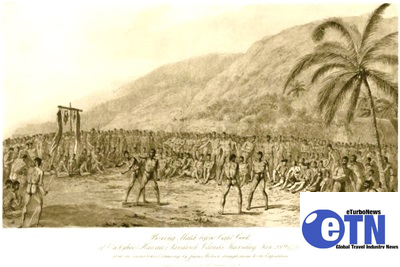It was a time for feasting, competitions, and religious ceremonies.
Makahiki began in November and ended in February, coinciding with the rainy season, when agricultural work was limited. This allowed people to focus on celebrating and enjoying the bounty of the harvest.
During Makahiki, all wars and conflicts were forbidden, although it remained traditional to pray that God smite one’s enemies. During this window of opportunity, people from different islands were free to travel and interact peacefully. This was a time for communities to come together and strengthen their social ties.
One of the highlights of Makahiki was the Makahiki games, which included surfing, canoe racing, boxing, wrestling, and other athletic competitions. These games were a way for people to test their skills and honor their physical abilities. Remarkably, the festival included numerous sexual activities that promoted fertility.
Religious ceremonies were also an important part of Makahiki. People would offer prayers and sacrifices to Lono, expressing their gratitude for the harvest and seeking his blessings for the year ahead.
Makahiki was a time of great joy and celebration for ancient Hawaiians.
It was a time to give thanks for the abundance of the land, to honor their gods and ancestors, and to come together as a community.
Makahiki continued to be celebrated in Hawaii until the early 19th century, when it was gradually replaced by Western holidays such as Thanksgiving and Christmas. However, elements of Makahiki have been revived in recent years, and many Hawaiians continue to celebrate the Makahiki spirit of gratitude, peace, and community. A similar contemporary nod to the Makahiki games is the Hawaiian Scottish Festival & Highland Games, taking place April 6 & 7, 2024, 9 am – 4 pm at Jefferson Elementary School grounds, 324 Kapahulu Avenue, in Honolulu. Chris Harmes, 2024 Athletic Director, has information for anyone interested in participating.
While the specific customs varied across different Polynesian cultures, the idea of a festival focused on abundance, gratitude, and peace was a common theme. While it may not align perfectly with the American Thanksgiving, there are similarities in the celebration of harvest and expressions of thanks for the blessings of life.
